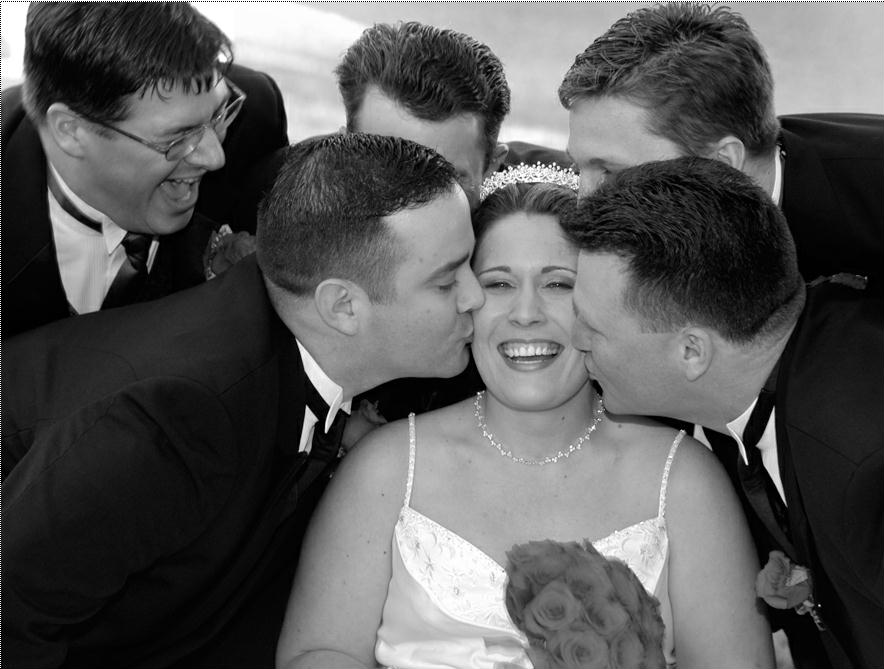All over the world, people practice numerous wedding customs that have been passed on through many generations. Although each has a long history of meaning and significance, many just seem strange and out of place in today’s culture. Are they just opportunities to playfully scam the bride and groom?
Check out some of the historical wedding customs that are still practiced today, much to the intrigue and wonderment of its audience.
In the Scottish pre-wedding tradition of “Blackening the Bride,” The bride is taken by surprise and covered with foul substances, such as eggs, various sauces, feathers, and well you name it…
The bride to be, officially blackened, is the then paraded around town, and of course a few pubs, for all to see.
Filmed in Fraserburgh and Rosehearty, in the north east of Scotland in 2007. A bride to be is subjected to a traditional ‘blackening’, one of the strangest of all pre-wedding traditions.
In many small villages throughout Germany, friends of the bride and groom will kidnap the bride and hide her somewhere.The groom then has to search to find her.
Of course the search always begins in the local pub, for obvious reasons, where the groom will invite everyone to join him in the search, after buying them all a drink.
This ritual has been known to end badly. . .
Indian weddings, which are traditionally multi-day affairs, involve many intricate ceremonies, such as “medhndi”, the practice of painting intricate patterns on the bride’s hands and feet.
The idea is to make the bride feel like a princess as she is about to start a new life.
An old, adorable Swedish custom is for the bride to carry coins in her shoes.
A silver coin from her father is placed in the left shoe, while a gold coin from her mother in the right shoe, ensuring she will never go without.
Guest Kissers
 At Swedish wedding receptions, guests may get an opportunity to kiss the bride or groom.
At Swedish wedding receptions, guests may get an opportunity to kiss the bride or groom.If the bride goes to the restroom, all of the women at the reception line up to kiss the groom.
If the groom exits the room and is out of sight, the men line up to kiss the bride.
The French have an interesting after-wedding tradition known as Chiverie.
During this traditional prank, friends and family of the newly married couple gather in the evening and clang pots and pans, ring bells, and blow horns intended to startle and interrupt the couple.
Upon hearing the noise, the newlyweds are to come out, still wearing their wedding attire, and provide their tormenters various refreshments.
African Americans embrace the “Jumping the broom” ritual. Its origin is a little vague, but its meaning is agreed as the beginning of the newlyweds creating their happy home.
 The “Jumping the Broom” is a ceremony in which the bride and groom, either at the ceremony or at the reception, signify their entrance into a new life and their creation of a new family by symbolically “sweeping away” their former single lives, former problems and concerns, and jumping over the broom to enter upon a new adventure as wife and husband.
The “Jumping the Broom” is a ceremony in which the bride and groom, either at the ceremony or at the reception, signify their entrance into a new life and their creation of a new family by symbolically “sweeping away” their former single lives, former problems and concerns, and jumping over the broom to enter upon a new adventure as wife and husband.
 The “Jumping the Broom” is a ceremony in which the bride and groom, either at the ceremony or at the reception, signify their entrance into a new life and their creation of a new family by symbolically “sweeping away” their former single lives, former problems and concerns, and jumping over the broom to enter upon a new adventure as wife and husband.
The “Jumping the Broom” is a ceremony in which the bride and groom, either at the ceremony or at the reception, signify their entrance into a new life and their creation of a new family by symbolically “sweeping away” their former single lives, former problems and concerns, and jumping over the broom to enter upon a new adventure as wife and husband.This “leap” into a new life (marriage as wife and husband is performed in the presence of families and friends. You can be as creative as you want when planning for this special ceremony.
In Italy it was customary for the groom to carry a talisman, piece of iron, in his pocket on the day of his wedding. The talisman was believed to ward off misfortune, while the bride’s veil covered and protected her from evil spirits.
When the wedding day came to an end, the newly married couple would shatter a vase or glass into many pieces. The number of pieces represented the expected number of years they would be happily married.
In Mexico, during the wedding the Groom bestows his bride a gift of 13 coins, or arras, representing Jesus and his 12 apostles. The coins are to be blessed by the priest and bear the groom’s promise to care for and provide for his wife.
In the old days of Ireland, couples dined on salt and oatmeal at the beginning of their reception: both the bride and groom would take three mouthfuls as a protection against the power of the evil eye.
During the reception, when the couple is dancing, the brides feet must remain on the floor. It is said that Fairies love beautiful things and their favorite beautiful thing is a bride. If the bride was to have even one foot off the ground, then she could be swept away by the Fairies.
It is bad luck for a bride, as well as anyone attending the wedding, to wear green at an Irish wedding. It’s also bad luck for a bride or the groom to sing at their own wedding. Of course that last one might have just resulted from a few too many weddings with bad singers…

